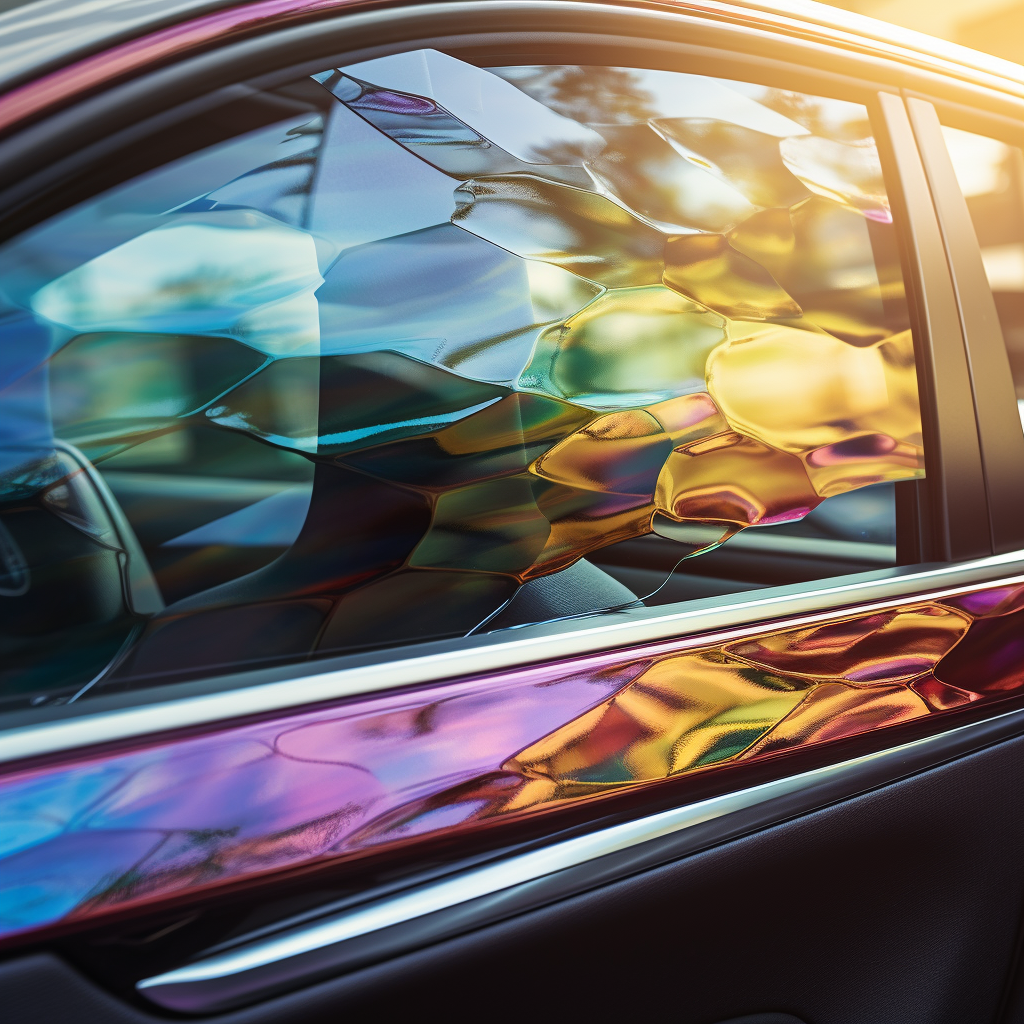
Do you know that window tint films can block up to 99% of harmful UV rays? That’s right, not only can they enhance the appearance of your vehicle or home, but they also provide valuable protection against the sun’s damaging effects. But with so many different types of window tint films available, how do you know which one is right for you? In this discussion, we will explore the various options and their unique features, giving you the knowledge to make an informed decision. So, let’s dive in and uncover the secrets behind the different types of window tint films and how they can benefit you.
Dyed Window Tint Films
Dyed window tint films offer a cost-effective solution for enhancing privacy and reducing heat and glare in your vehicle or building. These films are made by applying a layer of dye onto the window surface, which absorbs and disperses sunlight, providing excellent heat rejection properties. One of the key benefits of dyed window tint films is their ability to block harmful UV rays, protecting the interior of your vehicle or building from fading and damage.
When choosing dyed window tint films, it is important to consider factors such as the darkness level, legal restrictions, and the quality of the product. Common misconceptions about dyed window tint films include the belief that they will fade or turn purple over time, which is not true if high-quality films are used. To maintain dyed window tint films, regular cleaning with a non-abrasive cleaner and a soft cloth is recommended. When comparing dyed window tint films to other types of window tints, it is important to note that while dyed films offer excellent heat rejection, they may not provide as much protection against glare as other types, such as metallic or ceramic films.
Metallic Window Tint Films
Metallic window tint films are a popular choice for those seeking both heat rejection and enhanced privacy in their vehicles or buildings. These films are composed of a thin layer of metalized particles that reflect sunlight and block heat. Here are some advantages and disadvantages of metallic window tint films:
Advantages:
- Excellent heat rejection capabilities, keeping your vehicle or building cool.
- Enhanced privacy due to the reflective properties of the film.
Disadvantages:
- Interference with electronic devices, such as GPS or mobile signals, due to the metalized particles.
- The metallic appearance may not be aesthetically pleasing to everyone.
Installation Process:
- Clean the window surface thoroughly.
- Cut the film to size and apply it to the window using a soapy water solution.
- Smooth out any bubbles or wrinkles using a squeegee.
Maintenance Tips:
- Clean the tinted windows gently with a non-abrasive cleaner and a soft cloth.
- Avoid using ammonia-based cleaners, as they can damage the film.
Popular Brands:
- 3M
- LLumar
- SunTek
Choose metallic window tint films for effective heat rejection and increased privacy, considering the advantages and disadvantages, and following proper installation and maintenance procedures.
Carbon Window Tint Films
When considering window tint films, another option to explore is carbon window tint films, which offer distinct advantages and characteristics. Carbon window tint films provide numerous benefits, such as heat reduction and UV protection. These films are also known for their exceptional clarity and ability to block out harmful sun rays while allowing visible light to pass through. The installation process of carbon window tint films involves cleaning the window surface, cutting the film to the desired size, and applying it using a solution and squeegee. These films are highly durable and long-lasting, with some products even offering a lifetime warranty. In terms of cost, carbon window tint films are generally more expensive than other types of films. To maintain their effectiveness and appearance, it is recommended to clean them with a mild soap and water solution and avoid using abrasive materials. Overall, carbon window tint films are a reliable and premium option for enhancing privacy, reducing heat, and protecting your vehicle’s interior.
Ceramic Window Tint Films
Ceramic window tint films offer exceptional performance and advanced features that make them a top choice for enhancing the appearance and functionality of your windows. Here are some key points to help you understand the benefits of ceramic window tint films:
Benefits:
- Excellent heat rejection: Ceramic films block a significant amount of infrared heat, keeping your interior cool and reducing the need for excessive air conditioning.
- UV protection: These films provide high levels of UV protection, preventing harmful rays from entering your vehicle or home.
Installation process:
- Professional installation is recommended to ensure a precise and seamless application of the film.
- The process involves cleaning the glass surface, cutting the film to size, and carefully applying it using a squeegee.
Longevity:
- Ceramic films are known for their durability and long-lasting performance.
- With proper care and maintenance, they can last for many years without fading or peeling.
Cost comparison:
- Ceramic films are generally more expensive than other types of window tint films due to their advanced technology and superior performance.
Maintenance tips:
- Avoid using abrasive cleaners or rough materials that may scratch the film.
- Regularly clean the film with a soft cloth and mild soap to maintain its appearance and functionality.
Hybrid Window Tint Films
To further expand your understanding of window tint films, let’s now explore the realm of hybrid window tint films and their unique characteristics and benefits. Hybrid window tint films are a combination of two or more different types of tint materials. This combination allows for a variety of benefits, such as enhanced heat rejection, improved UV protection, and increased privacy. However, like any other type of window tint film, hybrid films also have their drawbacks. The installation process for hybrid films is similar to other types of tint films and requires professional expertise to ensure a seamless application. In terms of longevity and durability, hybrid films are known to be highly resistant to fading, cracking, and peeling. When it comes to cost comparison, hybrid window tint films tend to be more expensive due to their advanced technology and improved performance. Finally, maintenance and care for hybrid films are relatively simple, requiring only regular cleaning with a non-abrasive solution.
Conclusion
In the vast world of window tint films, it is crucial to understand the different types available. Each type offers unique benefits and features that cater to specific needs. From elegant and traditional dyed films to advanced and high-performance ceramic films, there is a tint film for every preference. Just like a window tint film enhances a car’s appearance and functionality, knowledge about these films empowers you to make an informed decision, ensuring a satisfying and personalized experience.






Comments are closed.